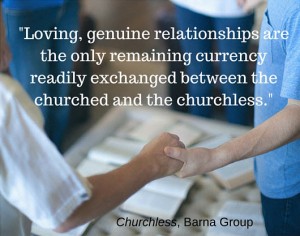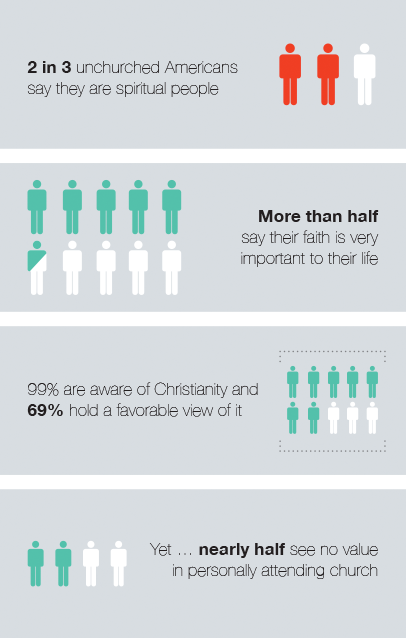
We’re hearing more and more from our church partners that a major concern they have is how to engage millennials. This is a unique time in the church’s history and, with 43% of adults in America being “churchless” (Barna Group), it’s easy to be alarmed about the state of the church and its possible future, not to mention a growing segment of the population.
Over the next few weeks, we’re going to be exploring this topic, both here on the blog and through new resources we’re working on.
How Technology Got Us Here
Over the past century, society eagerly adopted previously unimaginable technology that seemed only to improve our lives.
Now, however, the rate of technological change is multiplying so rapidly that it sometimes seems it’s spinning out of control. We are witnessing both predictable and unforeseen consequences of living in the digital age. And its effects are nowhere as evident and disturbing as in our children.
Of course, technology is not solely to blame. Sociological changes in the family, in lifestyles, and in thinking are heavy influencers, as we all know. Technology’s role has been to push those ideals further, faster and to a broader audience than any other medium ever has, while also edging out actual connection.
Many influential voices are working to shift the power of technology for good. With the largest generation ever—millennials—now in adulthood, we are fully entrenched in the church’s greatest challenge—and perhaps, opportunity—of our time.
Are we ready?
2 Ways Technology Is Helping
- We now have data insights to pinpoint the problem and potential solutions

Image from www.barna.org/churchless
Thanks to Barna and other research groups, we can learn very specific details about the groups who are risk.
Without unbiased, non-judgmental research that delves at the heart of the matter, there is a tendency to see millennial opinion through a negative lens, which breeds hopelessness and frustration.
Without this data, we wouldn’t know that 25% of the unchurched is, in fact, interested in matters of faith and more than 60% have generally positive perspectives on faith matters. (Churchless, Barna Group)
Every generation sees the world in a new way that the older generations rarely appreciate but, often, their vision leads to much-needed change. With the flight from the church of nearly half a generation, a crisis of faith has been made obvious. It will catalyze positive action and force the church to course correct. We have to see that as a good thing. (That’s not to say it won’t be painful.)
- Technology is an important aspect of engaging with the most technological demographic
While Barna’s research indicates that “loving, genuine relationships are the only remaining currency readily exchanged between the churched and the churchless,” [Tweet this] it remains that technology will be a significant platform for the development of those relationships.
Pastor Brady Boyd advises that we must meet millennials on their territory. “They’ll text til their thumbs bleed,” he says. “Learn to text!”
Pastor Boyd makes four predictions about the future of the church.



